guideWhat is conversational AI? Your complete guide
This guide is here to cut through the jargon and break down everything you need to know about conversational artificial intelligence (conversational AI) — where it came from, how it’s built, what it’s used for, and how you can leverage it to supercharge your business. Keep reading below.
Demo our approach
Imagine your ideal customer support — they’re available 24/7 and always equipped with the perfect response. This isn’t a distant fantasy — conversational artificial intelligence is here and ready to empower your team to deliver the best service possible. From GPS to Alexa, you’ve probably encountered some form of conversational AI without even realizing it. However, like most technology, it can be easy to adopt without really digging in to how it works.
Use this guide for a deeper understanding of how this technology can transform the customer experience.
What is conversational AI?
Conversational AI refers to a set of technologies and systems that allow humans and computers to interact with each other using natural language. It leverages artificial intelligence (AI), machine learning (ML), and natural language processing (NLP) to understand and generate human-like responses in text or speech. Conversational AI includes chatbots, virtual assistants, and other AI-driven systems capable of engaging in meaningful and context-aware conversations with people. See below for definitions of key terms:
Artificial intelligence (AI) is a field of computer science that aims to create computer systems capable of performing tasks that typically require human intelligence. These tasks include learning from data, making decisions, natural language understanding, and solving complex problems.
Machine learning is a subset of AI that enables computers to learn from data and improve its performance on specific tasks without being explicitly programmed. It involves algorithms that identify patterns and make predictions or decisions based on the information they’ve learned. Machine learning is used in a wide range of applications, from predicting customer behavior to recognizing speech and images.
Natural Language Processing (NLP) is a branch of AI that focuses on teaching computers to understand, interpret, and generate human language in a way that’s both meaningful and contextually relevant. In other words, this is the part that makes it feel human. It enables machines to read, listen to, and interact with text or human speech, making it possible for them to comprehend and respond to human conversation. NLP is what powers chatbots, virtual assistants, and language translation services, helping computers bridge the gap between human language and the digital world.
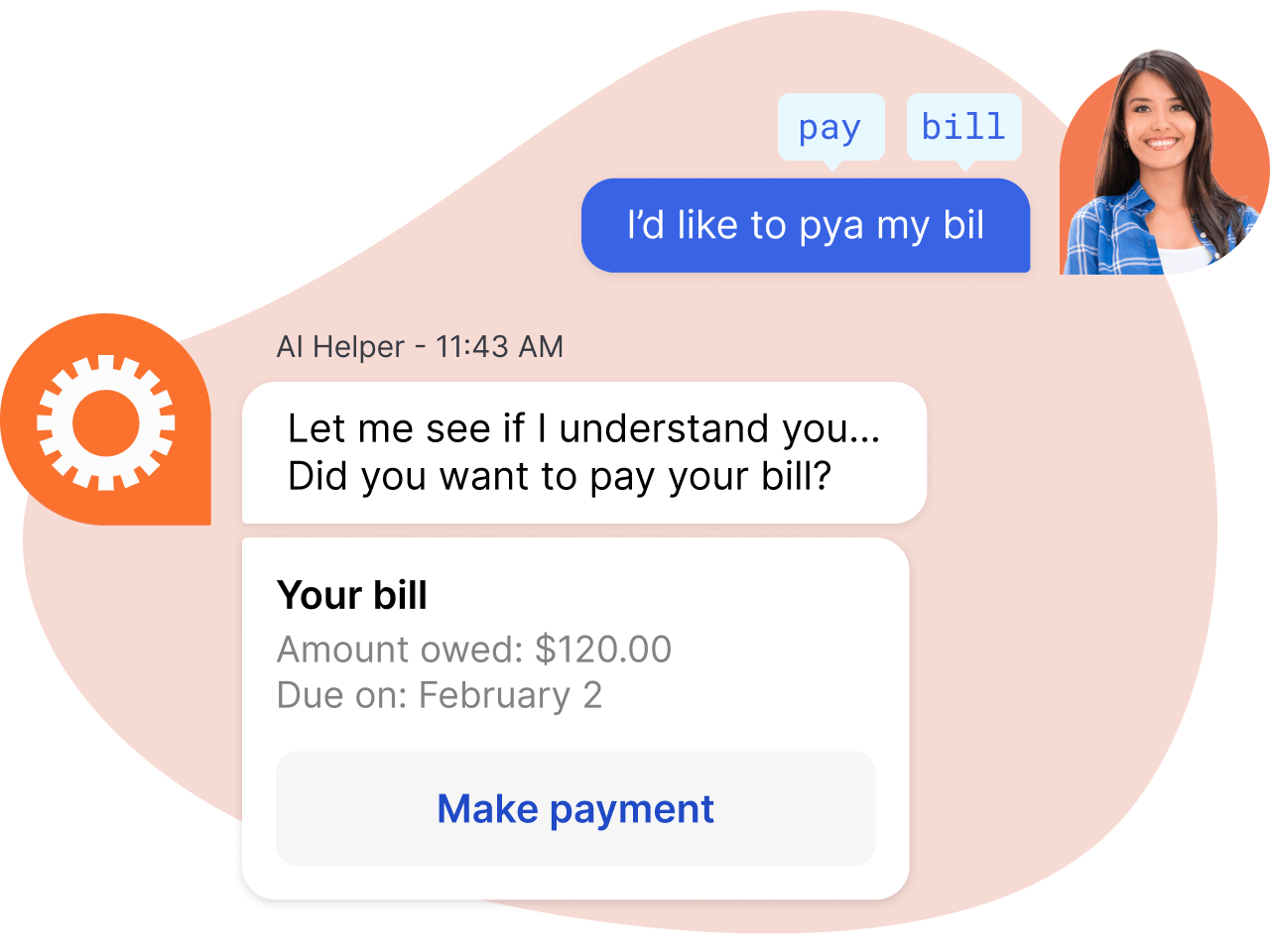


How does conversational AI work?
You ask a question and the robot responds — simple, right? While it looks like a breeze on the surface, there are processes at play making sure you get the most accurate and natural-sounding answers possible. Below is a step-by-step breakdown of how conversational AI works.
When you interact with a conversational AI system, your input — which can be in the form of text or speech — is analyzed by the AI. This analysis involves breaking down your prompt into meaningful components like words, phrases, and context.
Next, the AI needs to use this information to figure out what you actually want — the intent, purpose, or goal behind your prompt. This customer intent recognition involves identifying the specific task or query you want to accomplish.
Conversational AI systems are smart — they maintain context throughout the conversation, remembering previous interactions and your preferences. This context is vital for providing relevant and coherent responses.
Based on the recognized intent and context, the AI generates a response for you. This response can be in the form of text, speech, or even actions (e.g., sending an email, setting a reminder).
The response is presented to you, and the conversation continues. At this stage, you can provide feedback, ask follow-up questions, or make new requests, and the AI adapts its responses accordingly.
Much like an eager student thirsty for knowledge, conversational AI tools always take the opportunity to grow. These AI systems often incorporate machine learning algorithms that learn from user interactions. Over time, they improve their understanding, response quality, and adaptability to user behavior and language patterns.
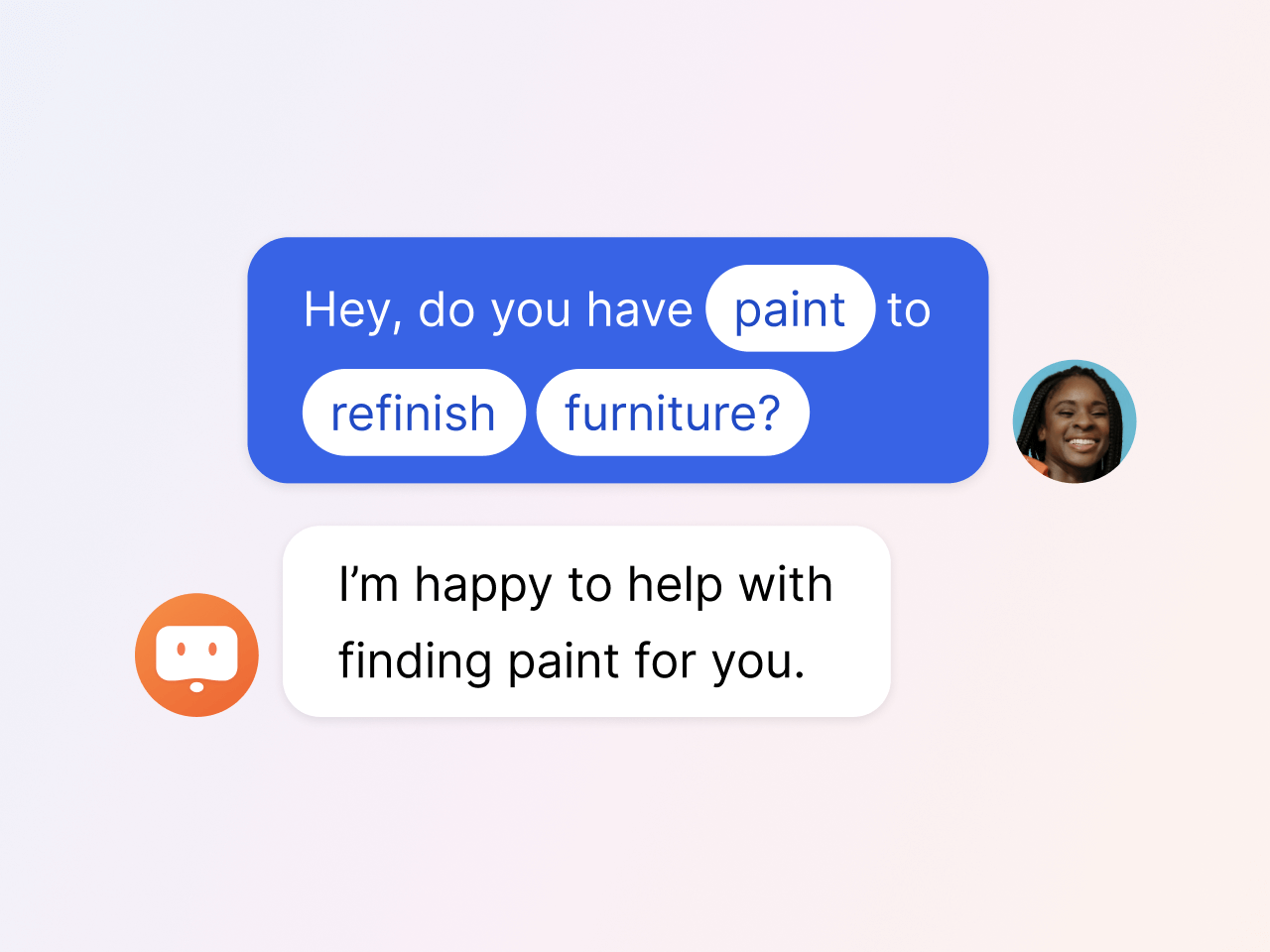


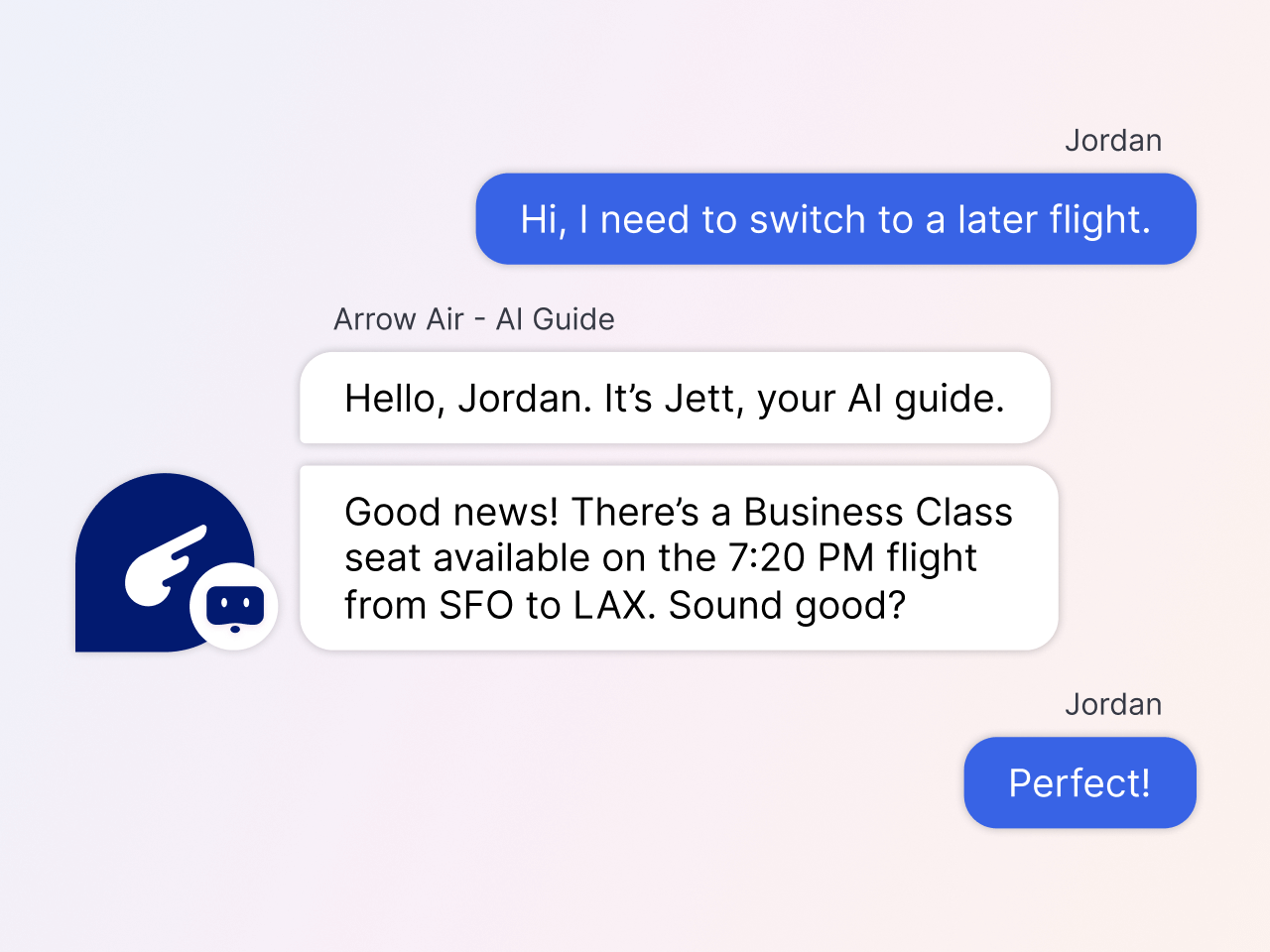

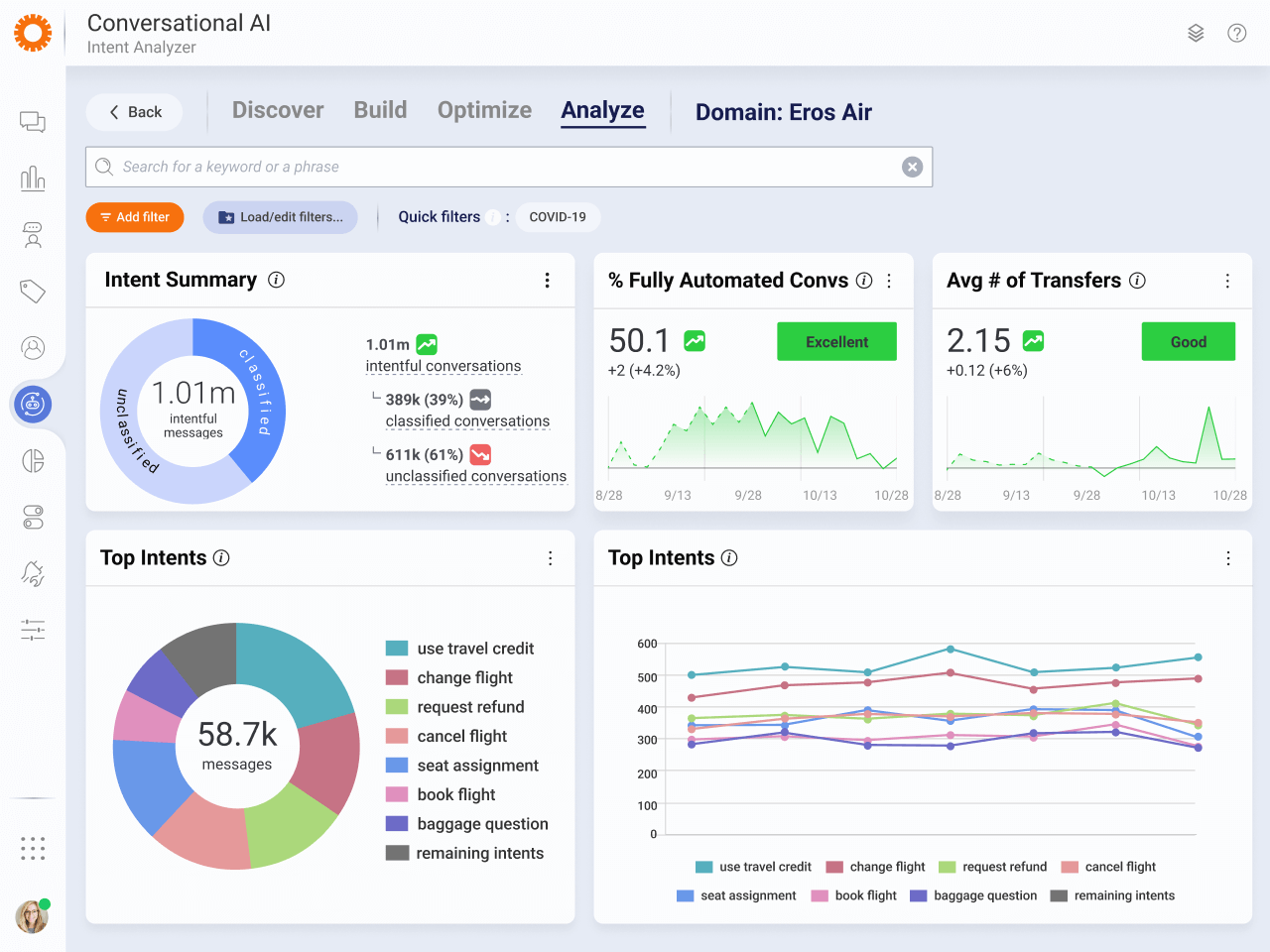
Types of conversational AI technologies
There are two main types of conversational AI that dominate the landscape as we know it.

AI chatbots
Those little bubbles that pop up in the corner of websites to ask if you need help? Yep, it turns out you’ve probably already encountered a chatbot before. An AI chatbot is a computer program powered by artificial intelligence and natural language processing capabilities, designed to simulate human-like text or voice-based conversations. The underlying tech has gotten so good that you might not realize you’re talking to a robot.
These chatbots can interact with users, answer questions, provide information, and perform tasks — making them super useful for things like customer support inquiries and assisting with automated processes. They range from rule-based chatbots, which follow predefined scripts, to more advanced conversational AI chatbots that learn from user interactions, offering context-aware and personalized responses.
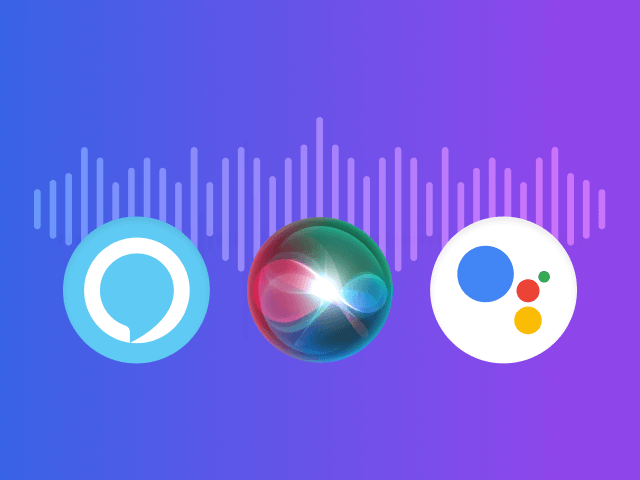
Mobile and voice assistants
Voice and mobile assistants are categorized as AI-powered technologies that assist people through voice or text interactions, typically on mobile devices. This is the tech you’re probably familiar with — think Amazon’s Alexa, Apple’s Siri, and Google Assistant. These voice assistants respond to spoken commands, allowing you to control smart devices, ask questions, set reminders, and perform different tasks using natural language.
Mobile assistants, like Siri and Google Assistant, are like a personal assistant that lives on your smartphone and tablet. They can provide information, help with tasks, send messages, and navigate your device’s functions. Both voice AI and mobile assistants rely on artificial intelligence and natural language processing to understand your input and respond. They are valuable tools for hands-free, convenient interactions in daily life.
Conversational AI in the real world
Since conversational AI has exploded in popularity, savvy companies and organizations have already implemented this technology into their internal processes and customer-facing services. Want to see how it’s done right? We’ve gathered a handful of real-world examples of companies successfully implementing conversational AI.

HSBC Bank
The move to conversational AI at HSBC has created an exciting new career path for some of its 19,000+ customer service agents. The new roles it has introduced to date include Conversation Designer and Chatbot Manager in both onshore and offshore contact center teams.
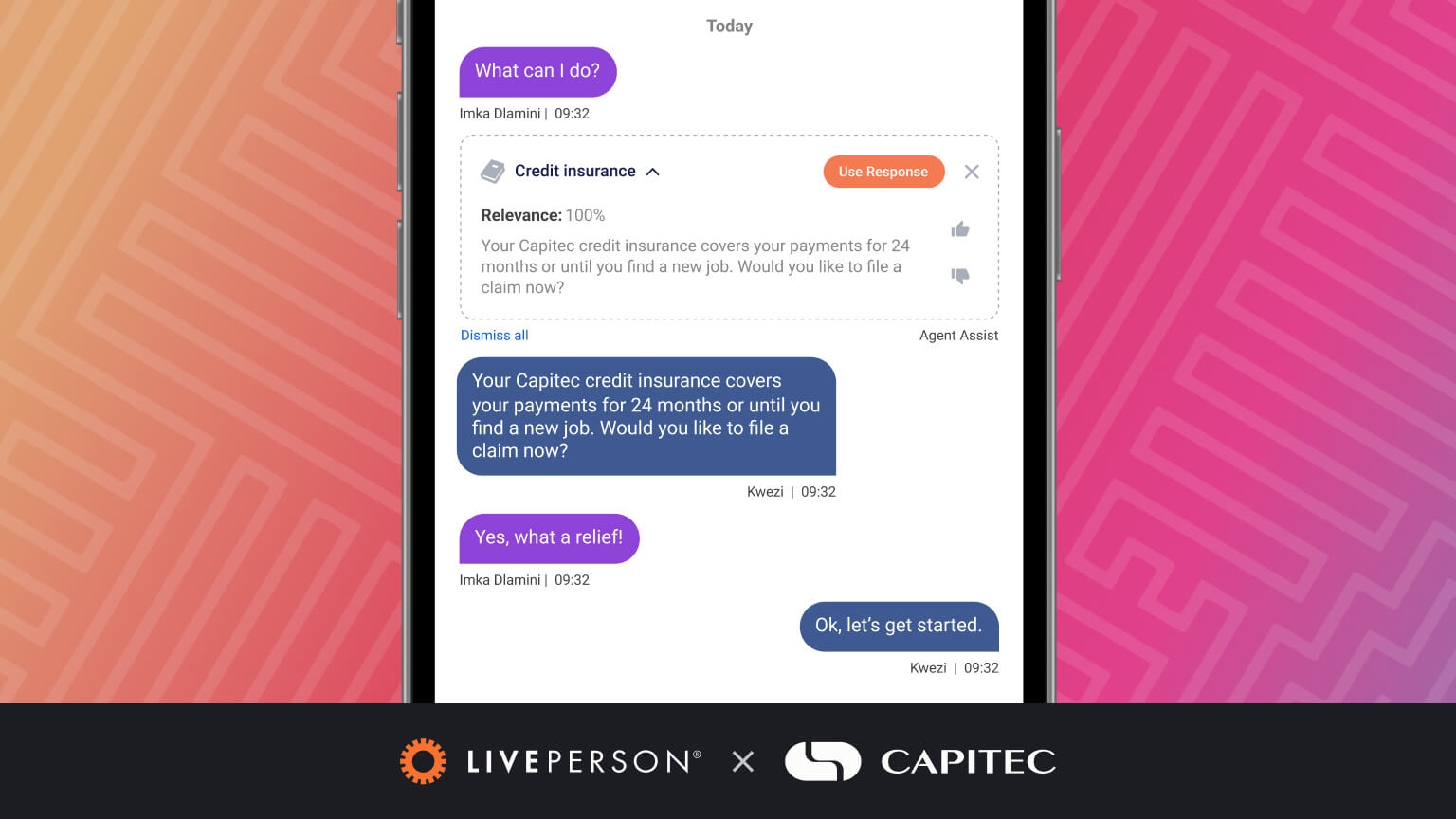
Capitec
Conversational AI technology made it easy for Capitec to adopt a 24/7 service model. Using a messaging-first approach, service agents can meet customers when and where it’s convenient for them. Additionally, agent-facing generative AI tools have helped them to double their efficiency leading to a 79% CSAT.

buddybank
Buddybank, a subsidiary of Unicredit, launched in 2018 as a fully conversational bank, using LivePerson’s in-app messaging to engage with customers through an iPhone app-based bank, providing a 24/7 concierge-service to assist with customer requests.
How to implement conversational AI
So you’ve decided you like the idea of bringing conversational AI into your business — but where do you start? With so many options available, taking the first step can feel overwhelming. Not to worry! We’ve whipped up a step-by-step guide to help you successfully choose, set up, and optimize conversational AI for your business.
Step 1: Choose

Define your goals and objectives
Start by identifying the specific goals and objectives you want to achieve with conversational AI. Are you looking to improve customer support, automate sales processes, or enhance user engagement? Clear goals will set the foundation for your journey.
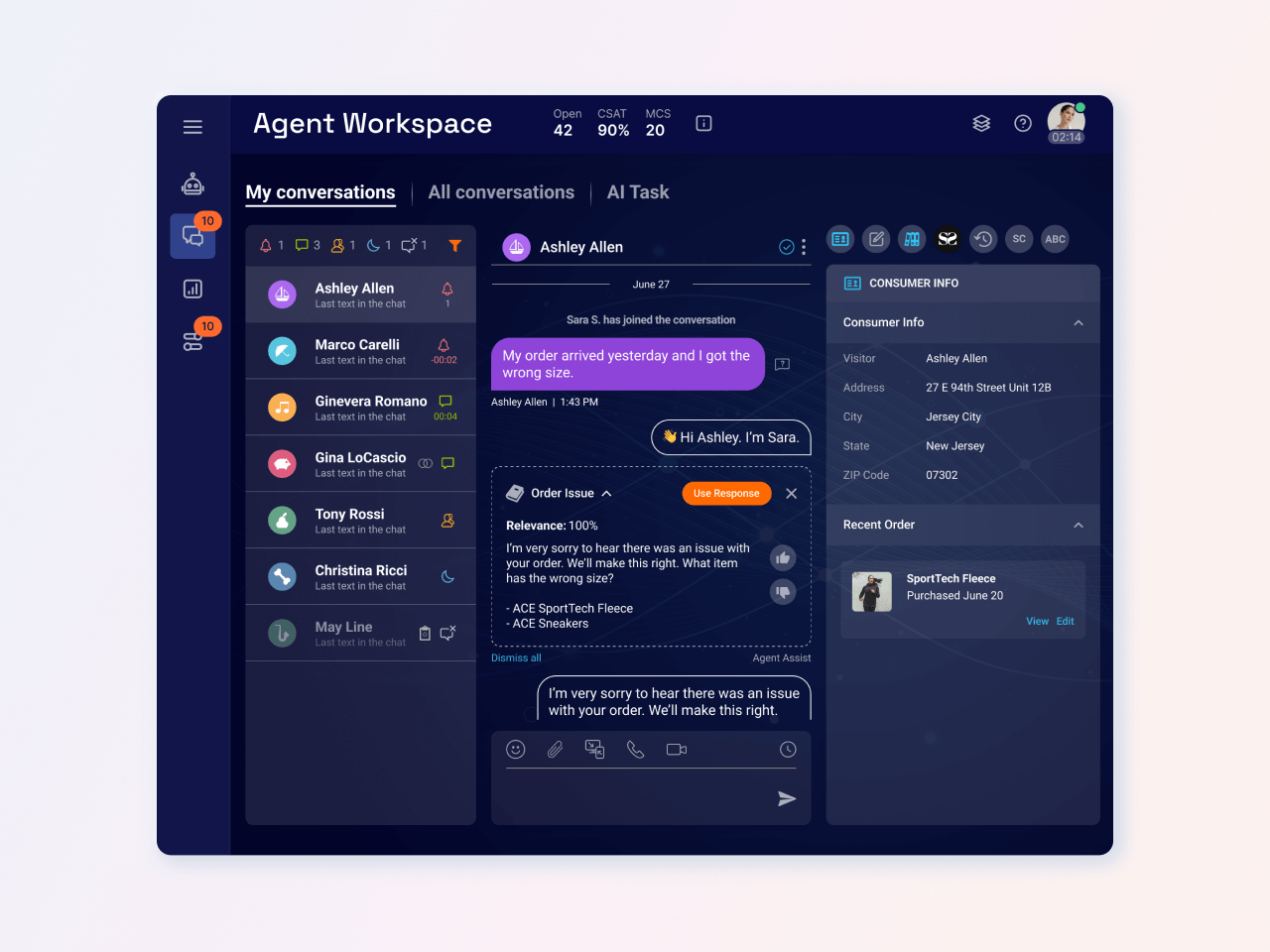

Identify use cases
Next, you need to determine the specific use cases where conversational AI can provide value to your business. This could include customer service chatbots, virtual assistants for website visitors, or internal HR support.


Choose the right platform or solution
LivePerson’s award winning conversational AI platform, Conversational Cloud®, is built using large language models fine-tuned by billions of real customer conversations. With safety and security guardrails designed for the world’s largest enterprises, you remain firmly in control of the conversation.

Step 2: Set up

Data collection & preparation
To make your conversational AI work optimally, you need to feed it the right diet of information. Gather relevant data that will be used to train and improve your chosen system — this could look like historical customer interactions, FAQs, product information, or other relevant content specific to your objectives.
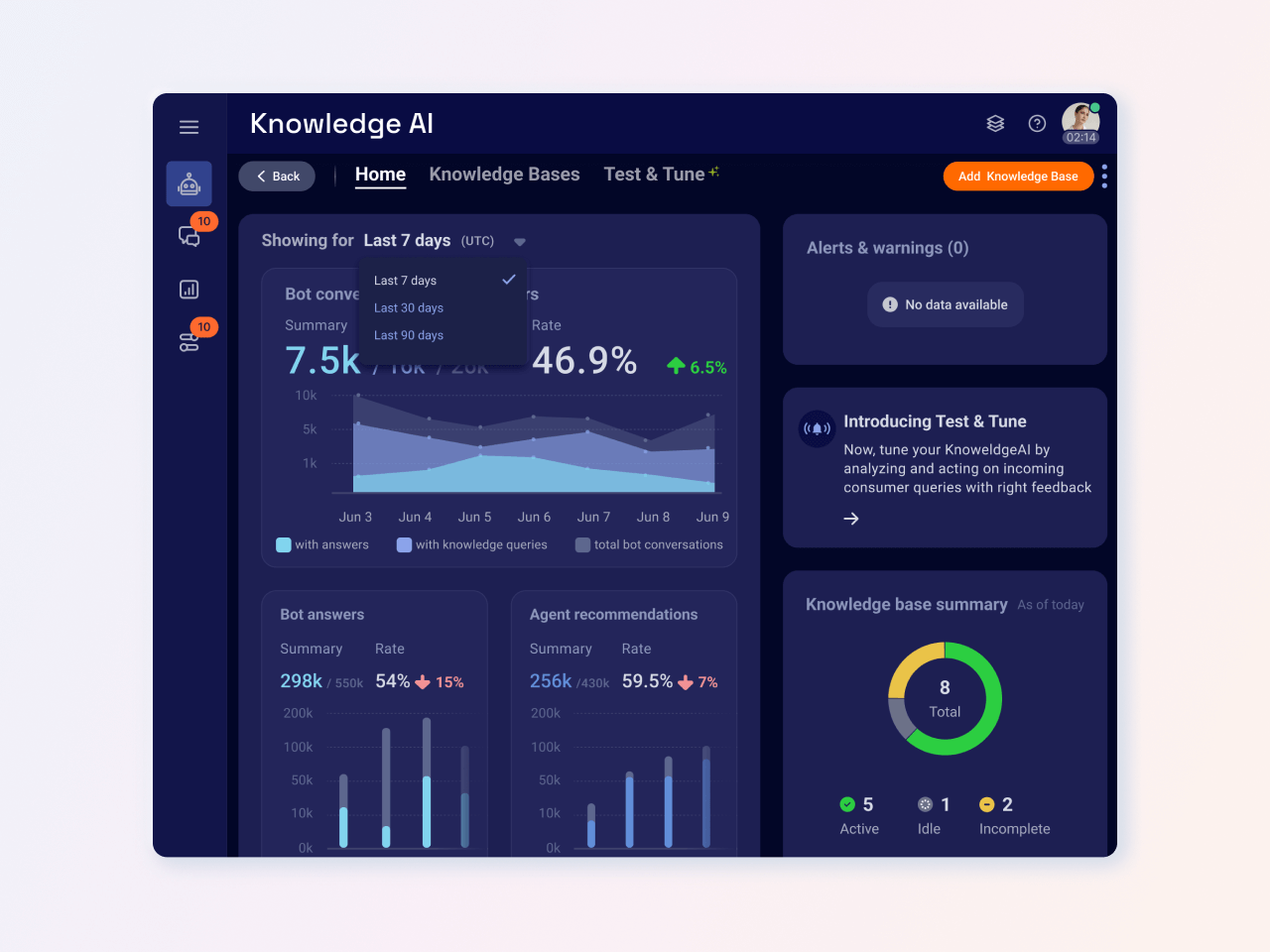

Design conversational flows
Plan the conversational flows and dialogues for your AI. Map out the user journeys and anticipate different user intents and responses. Create a conversation design that aligns with your brand’s tone and style. LivePerson’s Conversation Builder makes designing and scaling your chatbot easy with our intuitive point-and-click chatbot builder.
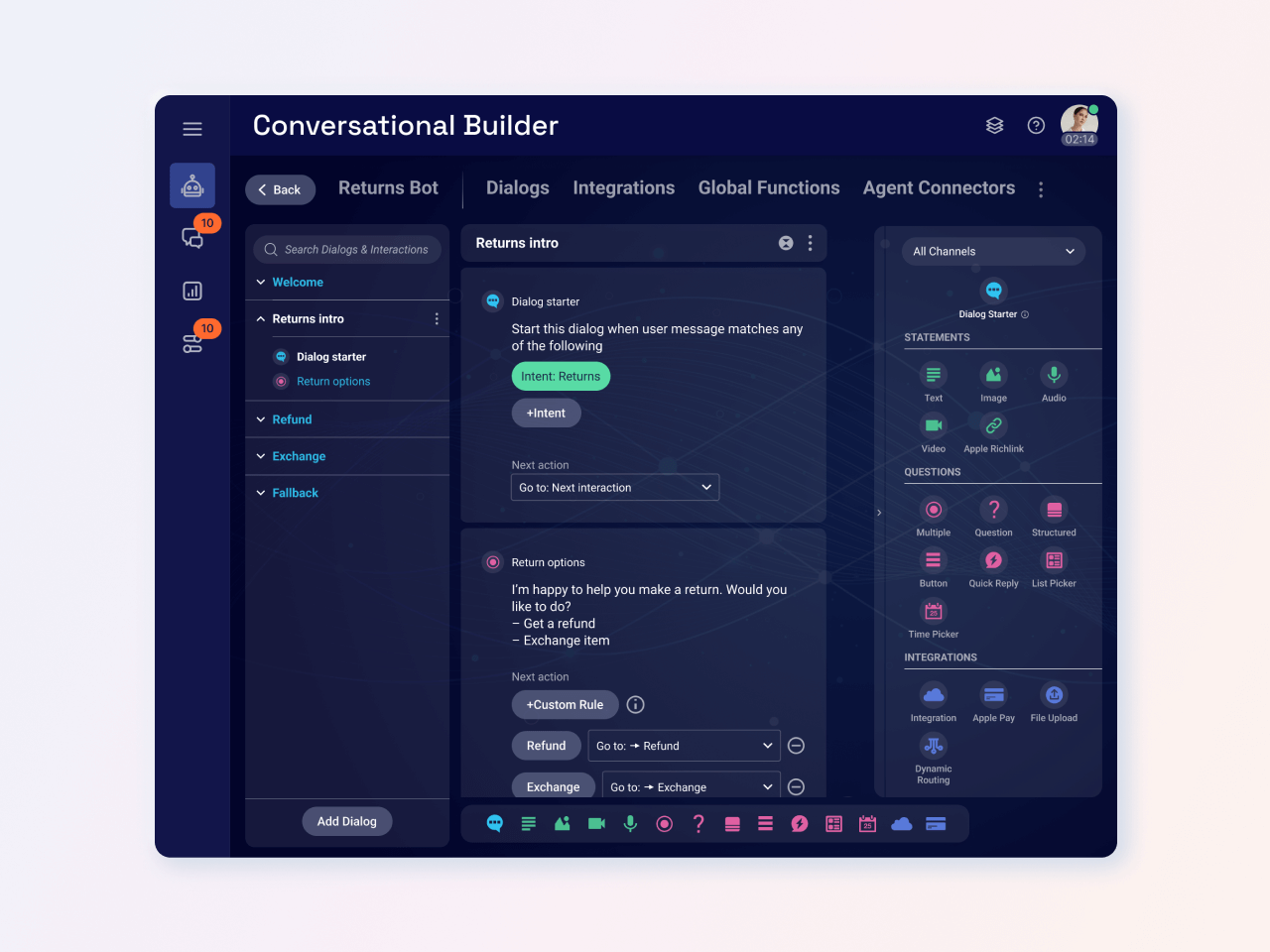

Develop & train your AI
Depending on how customizable and collaborative your chosen platform is, you may get access to tools that allow you to train your AI using the collected data and fine-tune it for accuracy and understanding.


Integrate with existing systems
Make sure your conversational AI solution can integrate seamlessly with your existing systems and databases. This may involve APIs, webhooks, or middleware to connect with CRMs, ERPs, and other relevant software. The LivePerson Integration Hub gives you access to all of the data and content needed to provide personalized conversations and make agents more effective.
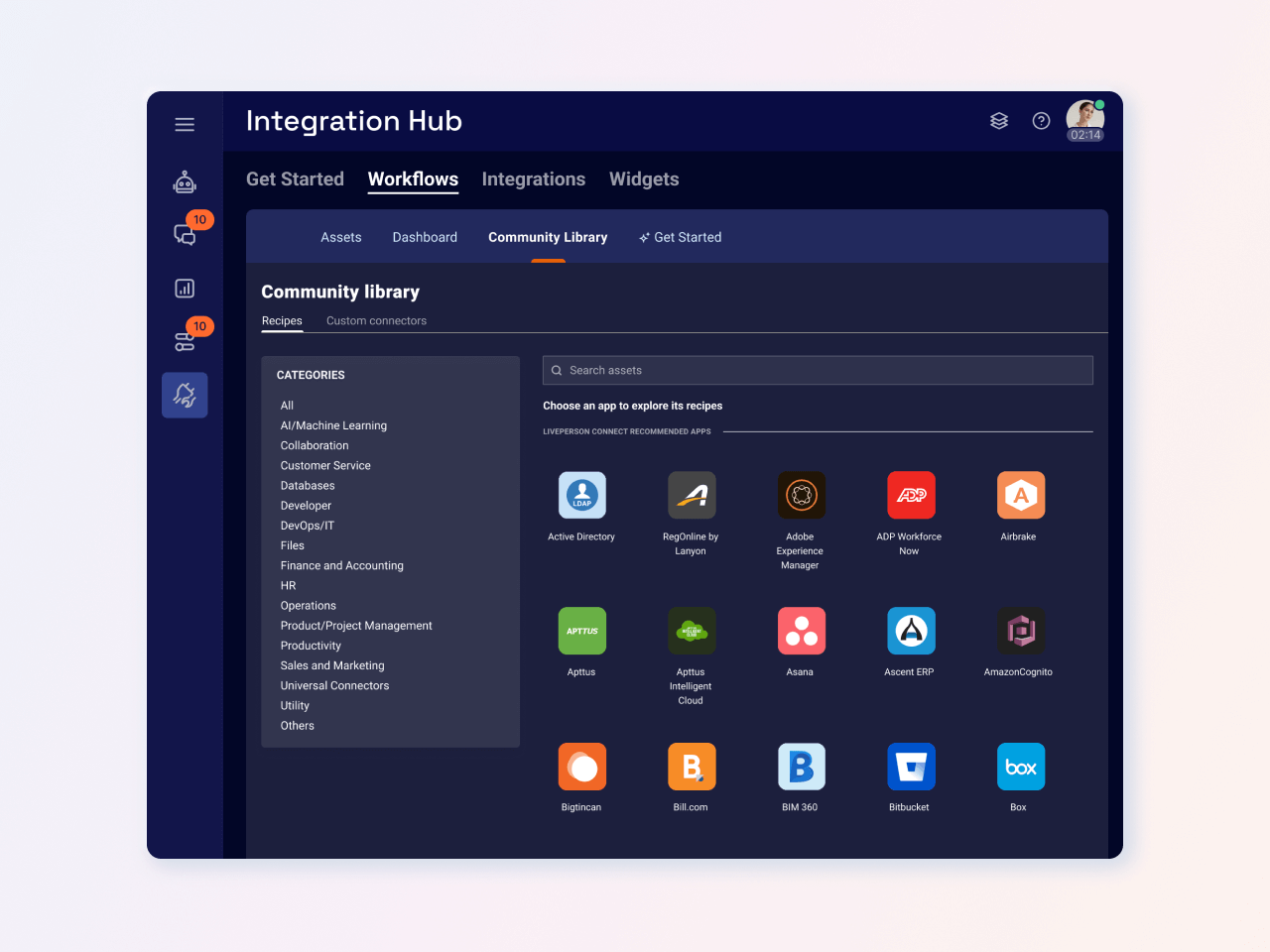

Test extensively
No matter how eager you are to adopt and launch this technology, you need to make sure it’s, well, actually good. Be sure to conduct thorough testing of your conversational AI to identify and resolve issues. Test for various user scenarios, edge cases, and potential bottlenecks. User acceptance testing (UAT) is also helpful from a UX perspective — after all, you want to make sure those using the tech are getting the most out of it.


Deploy & monitor
It’s showtime! Deploy your conversational AI on the chosen platforms, such as your website, mobile app, or messaging channels like Facebook Messenger. Monitor its performance, collect user feedback, and track key performance indicators (KPIs).
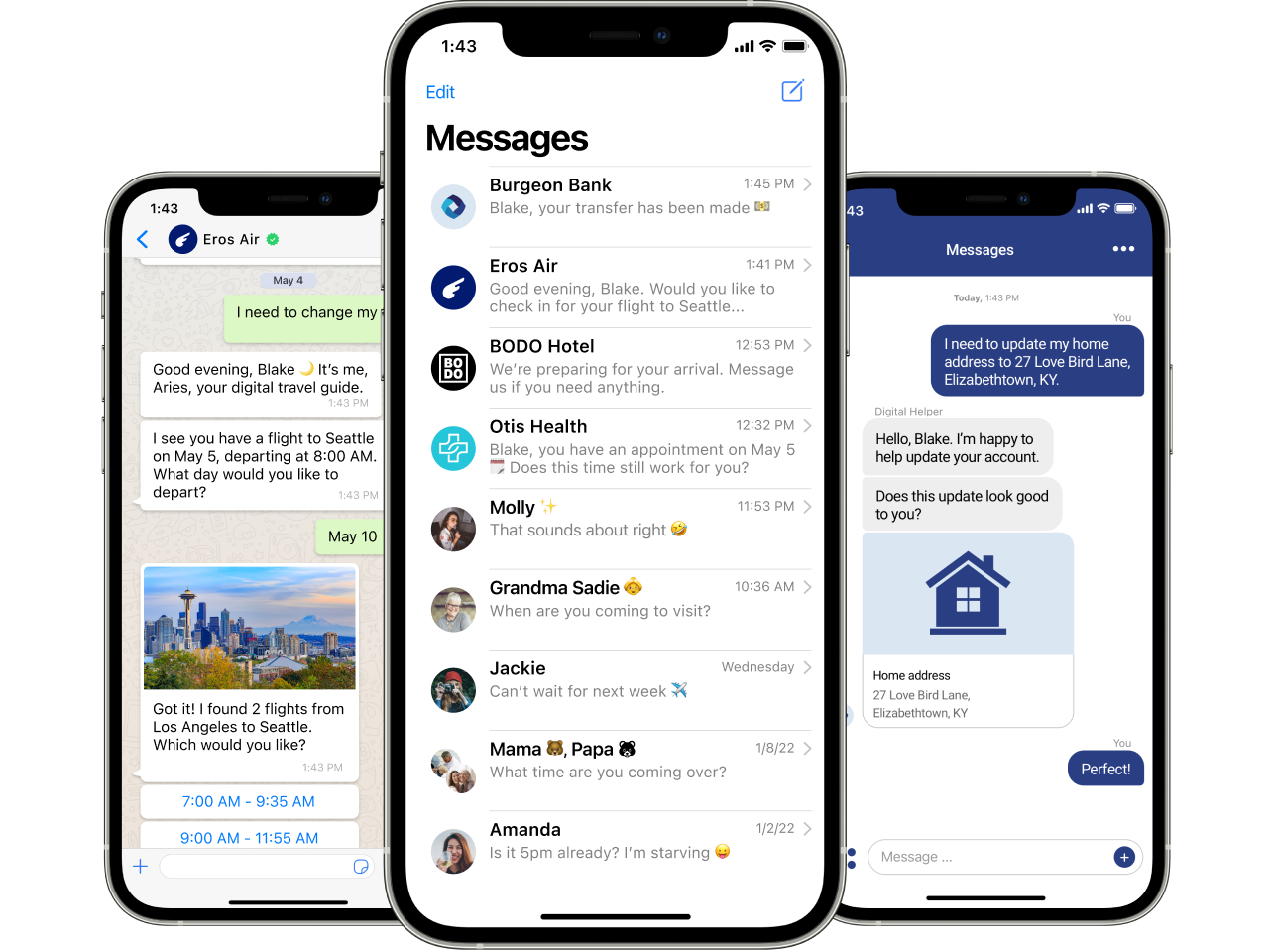
Step 3: Optimize

Optimize & iterate
Continuously optimize your conversational AI based on user feedback and data insights. Make improvements to its responses, conversation flows, and understanding of user intent. It’s also crucial for you to stay on top of content and information updates.
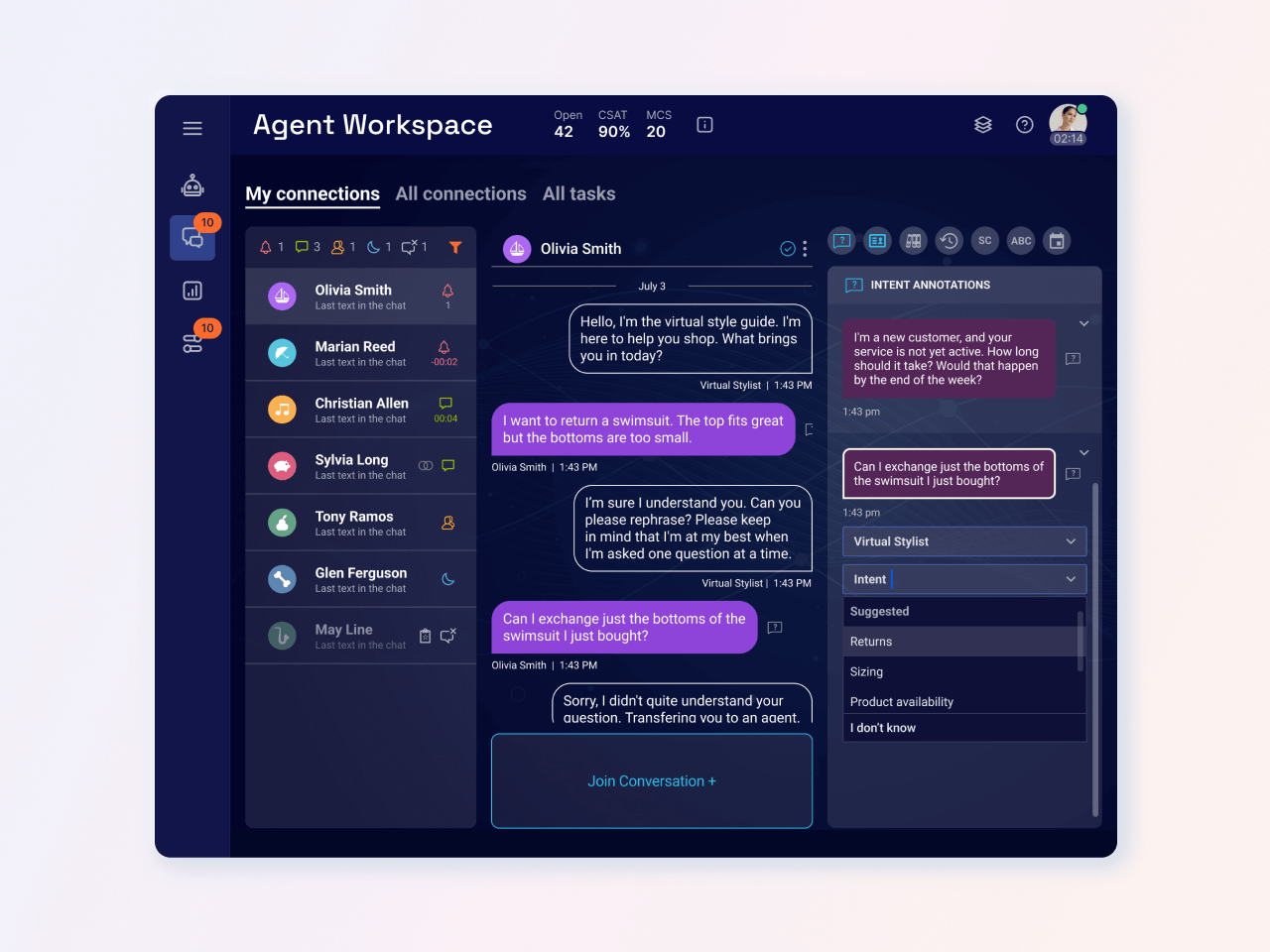

Ensure ethical & regulatory compliance
Pay attention to ethical considerations and ensure your conversational AI complies with relevant regulations, especially if you’re dealing with sensitive data or financial transactions.
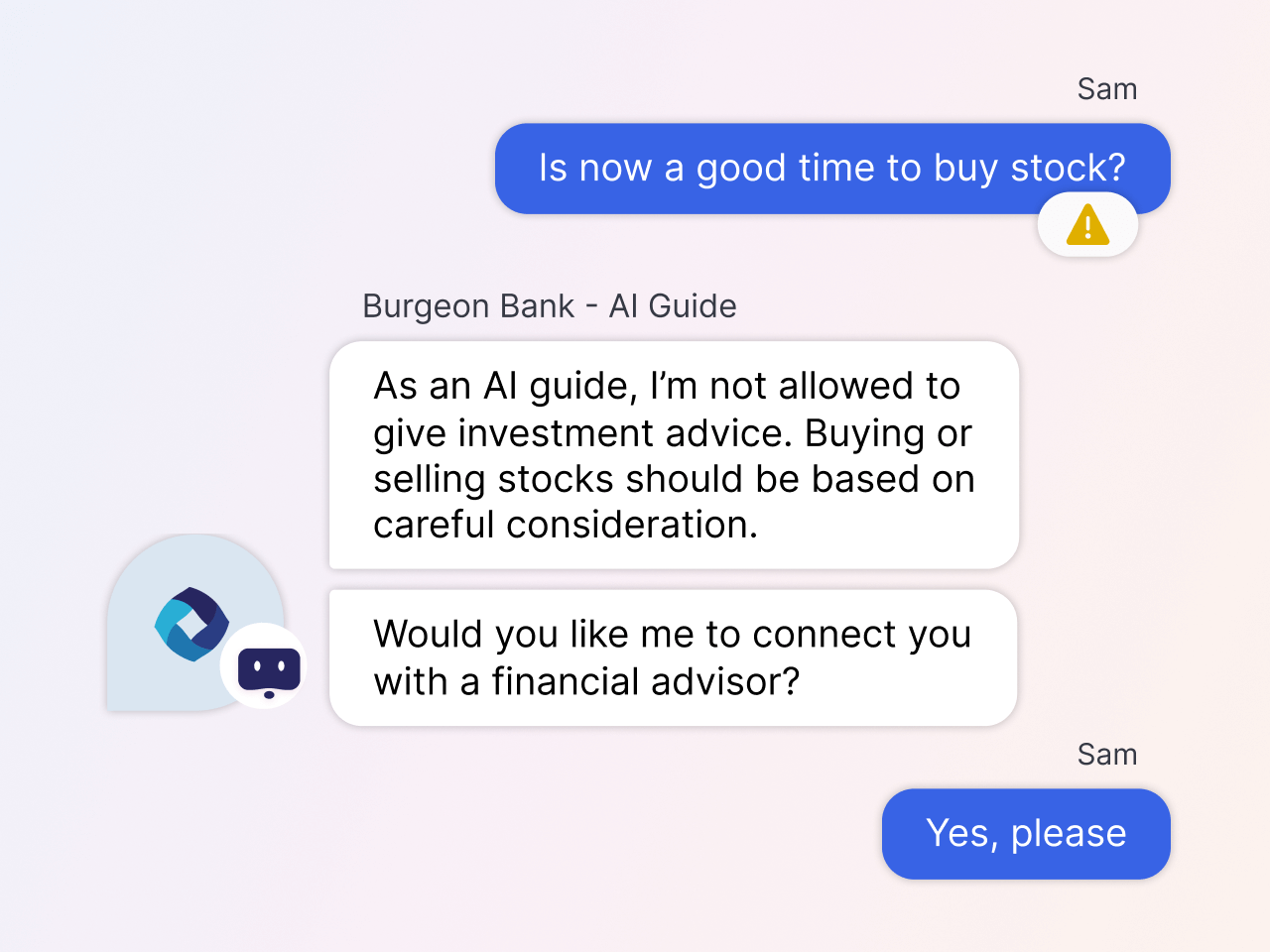

Provide human backup
While conversational AI is pretty red-hot with its capabilities, it’s not perfect. In fact, be prepared to offer human assistance when needed, especially for complex or sensitive inquiries. Implement a seamless transition from AI to human agents when required.


Scale as needed
As your business grows, your conversational AI platforms should grow with it. Ensure that you can handle increased volumes of interactions and adapt to evolving user needs.


Gather user feedback
Getting feedback directly from the people using your tech is crucial if you want to grow and succeed. Listen to users — use their feedback to refine your conversational AI and ensure it aligns with user expectations.


Dos and don’ts: Best practices and pitfalls
We’ve given you a thorough run-down on how to implement conversational AI technology in your business, but there are also some common pitfalls to look out for during the process. By adhering to best practices, you can mitigate risks and challenges that pop up both during and after implementation. Here are our simple dos and don’ts that you should keep in mind as soon as you consider taking the leap.
The future of conversational artificial intelligence
If there’s one thing we know for sure about conversational AI, it’s that the buzz around it is causing rapid advancements in its surrounding technologies. Here are some of the trends and advancements in AI that are poised to change (and improve) conversational AI in the future.
Machine learning is only going to get smarter, faster and more efficient, which will have a direct impact on conversational AI. Better funded and wider reaching ML research means we’ll have more powerful models capable of tasks more complex than ever before.
With an increased capability to analyze large amounts of data, our conversational AI models will become better at making fully informed decisions. This will be particularly important in industries like finance and healthcare, where there is no room for error.
This is a big one. As conversational AI becomes more prevalent, especially in fields where sensitive information is disclosed, there will be increased pressure to create robust security solutions and privacy policies to protect user data.
Virtual agent networks are quickly gaining popularity in the conversational AI space. A VAN allows users to access multiple virtual assistants through a single portal or window, which is a boon for larger businesses or multidisciplinary organizations. While the concept isn’t new, you can expect to see it become far more common in the near future.




Taking the next step
Conversational AI capabilities are essential for businesses seeking to thrive in the digital age. This technology serves as the linchpin between companies and their customers, offering round-the-clock support, streamlined business processes, and personalized interactions — all without the resourcing headaches. By enhancing customer engagement, improving operational efficiency, and unlocking valuable insights, conversational AI brings a new level of digital experiences and satisfaction to the customer experience.
LivePerson’s Conversational Cloud is the conversational AI platform for enterprise brands looking to set themselves apart in a dynamic marketplace. With 10x the customer interactions and 20% boost in customer satisfaction, the Conversational Cloud is the go to solution for facilitating better customer conversations at scale.
Get a demo





















